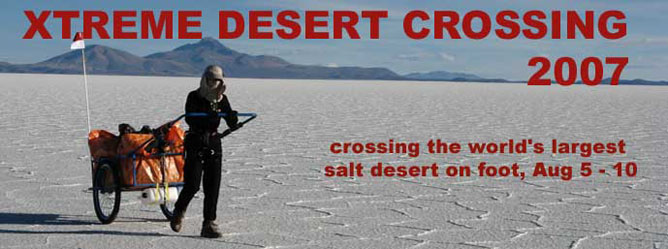
Picture above: Shani Tan, pulling a desert cart on the Salar de Uyuni, Aug 2007
Our Proud Partners:
Medical expertise, hardware and accessories
 |
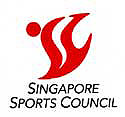 |
 |
 |
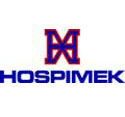 |
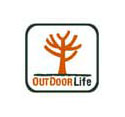 |
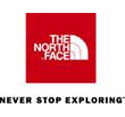 |
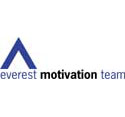 |
| The North Face gear, and venue | |||
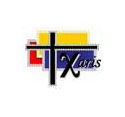 |
 |
 |
|
| Medical expertise, hardware and accessories | |||
About The Expedition
[ Scroll below for latest dispatches from the team]
In celebration of adventure, a team of Singaporean adventurers will aim to make the first SE-Asian , unsupported desert crossing.In Aug 2007, a Singaporean team will make a crossing of the Salar de Uyuni, the world’s largest salt desert. To the best of our knowledge, the Salar has been crossed in this way only three times ( 1994, 2002 and 2005 ).The crossing will be on foot and the team will not be re-supplied in anyway by air or land, with the team transporting all their water, food and equipment for the seven day journey across the 180km desert, an Asian expedition ‘first’. The Xtreme Desert 2007 is an expedition led by prolific mountaineer, corporate motivator and author David Lim. ( Note: SInce 2007 it has been discovered that David and Shani’s crossing is the 5th on foot)
About The Salar de Uyuni
Salar de Uyuni is (10,582 square km), the world’s largest salt flat. It is located in southwest Bolivia, near the crest of the Andes, 3650 meters high. The major minerals found in the salar are halite and gypsum. Some 40,000 years ago, the area was part of Lake Minchin, a giant prehistoric lake. When the lake dried, it left behind two major salt deserts, Salar de Coipasa and the larger Uyuni. Uyuni is roughly 25 times the size of the Bonneville Salt Flats in the United States. Salar de Uyuni is estimated to contain 10 billion tons of salt of which less than 25,000 tons is extracted annually.
The Expedition Plan and Challenges
The expedition will travel from west to east in the latter half of the Bolivian winter, from Llica to Colchani. The Salar de Uyuni comprises almost unrelenting crystalline salt with salt ridges – except for two small ‘ islands’ of rock, the Islas de Pescadoes (Island of the Fishes) and Incahuasi (House of the Incas).The team will be using customised aluminium carts crafted by Hospimek to carry up to 80 kgs of water, food and equipment. There are no sources of water in the Salar and every drop has to be transported by the expedition members. Navigation will be by compass and GPS units. The team’s power needs will be both rechargeable and lithium batteries by Energizer, and their equipment includes gear from The North Face. Unladen at 12 kgs each, the Salar Carts will be pulled across the 175km desert at the rate of nearly 30kms per day for 7 – 8 days. This will be, for partially disabled mountaineer, and Singapore motivational speaker David Lim, his first non-mountaineering expedition in 17 years of adventures. Expedition partner Dr. Shani Tan brings with her decades of adventure, and medical experience.
Challenges include pulling these loads at altitudes (the Salar is on average over 3700m asl.), as well facing the huge temperature variations during the Bolivian winter (15º C to -20ºC). There is risk of their water freezing solid in the evenings, and with no other sources of water, a real risk to the team. The route (shown in red below) , is expected to take a week to complete.The team needs a great deal of teamwork to take them through this adventure.
The team’s route in blue as sketched used DEM and our GPS coordinates ( post expedition ) . Many thanks to WongTing Sern for his help doing these diagrams. the prominent volcano in the top middle of the graphic is Cerro Thunupa at 5432m a.s.l.
The Team:
16/07/2007
Tuesday-31/07/2007-2:23AM-La Paz
After a 36 hour flight, we reached Bolivia this morning at about 9am. The diplomatic letters that our bolivian friend had obtained worked the charm and we got our visas in no time at all. Downside was that American Airlines mislaid our four duffel bags ( together with about 30 other pieces from the Miami flight ) – hope to get it tomorrow. All I can say is that the descent into La Paz is spectacular from all the peaks of the Cordillera Real Range in view, especially the two 6000m peaks near the capital ‘ Illimani ( at 6400m) and Huayna Potosi ( 6000m ). It was also a delight to meet our host and logistics operator Bernardo, with whom we shared many happy memories from the 1st Singapore Everest Expedition in 1998. That year, Bernardo climbed on hardly any bottled oxygen, and summitthed close to 6am on May 25th, turning him into a Bolivian hero of sorts. We´re resting at well over 3600m, and feeling slightly lightheaded – though not enough to deny us a meal of Bolivian fillet steak chips, peppers and onions with some freshly made tomato salsa. The coca leaf tea is also supposed to help acclimatisation.Tomorrow, we have to sort out the missing baggage, and head north to Lake Titicaca for more acclimatisation. We have been told by Maureen that the expedition trolleys will arrive tomorrow on the 31st. We should be back from the Lake on Aug 2 to sort it all out before the Salar. We also have to make some fuel and other purchases.
Wednesday-01/08/2007-La Paz
Updates – It looks like things are getting a bit rough for us. It has nothing to do with what nature has to throw at us. It’s just our freight forwarders. We have been waiting patiently for our trolleys, and we just found out that they are stuck in Miami, we understand that they are “on-hold”. I just can’t understand why, since it left Singapore on 24th July 2007. It just does not seem likely that they are going to leave Miami and get to us within the next 48 hours. So, while our trolleys are enjoying the sun and surf in Miami, Shani and I are putting Plan B into action – that is getting some basic trolleys made up by fabricators here in La Paz over the next 2 days.
We have just enought time to pull it off. We are going to be very busy because we have ´lost´a large amount of equipment necessary for our journey. This means that we need to adapt and work with what we can get our hands on over here. The trolleys are not likely to be as effective as the ones that we had made earlier, but we hope that they will do. For now we will just have to grit our teeth and git our stuff together.
David
Thursday-02/08/2007
EXPEDITION ON BRINK OF FAILURE
After a very pleasant and sccenic acclimatisatio spell by the shores of Lake Titicaca, we arrived back in La Paz to discover that our trolleys which were to have arrived Jul 31st or Aug 1st ( latest ) had not arrived.
Owing to some incompetency, and a lack of follow through from our freight forwarder, the shipment was stuck in Miami for no good reason. After a whole evening of calls, text messages et al, we are informed that the boxes would arrive today ( Aug 2nd ). This morning brought more woe – with the mission critical trolleys having been routed to Argentina, and then Santa Cruz. With the upcoming weekend and holiday on Monday – we are well and truly screwed. So today, we entered the somewhat rough township of El Alto and bought bicycle rims, tyres, spares and tools. Bernardo, our operator here, sourced two locally made steel trolleys (like those used by the rag and bone men). We rushing a modification job and still aim to make the Salar Crossing. We are quite beyond anger and will probably seek legal damages and expenses for the snafu upon our return. We have to match gross incompetency with a positive solution driven approach. We aim to leave for Uyuni on Saturday now with a Sunday start and just hope these trolleys can withstand the beating that is coming up… We´ll probably see our custom made trolleys that we and Hospimek spent six months designing, modifying and fabricating on our way home – fat lot of good they will be to us by then.
David
Friday-03/08/2007
Aug 3rd here and we are wrapping up a hectic 2 days and executing Plan B.
Owing to the dalliance and incompetence of the shipper, we will not be able to get the trolleys shipped from SG in time. Nuff said, but they have had them since the 24th, they sat in Miami for the longest time, and now it is too late. Our locally made steel carts, look crude and have slightly misaligned wheels, but beggars can’t be choosers here. We leave fo Llica tomorrow, with a view of beginning the trek on Sunday. Last night , together with Bernardo, our Bolivian operator and local Everest hero, we were interviewed on Que NoMe Pierda, a kind of David Letterman Late Show which is popular in three countries
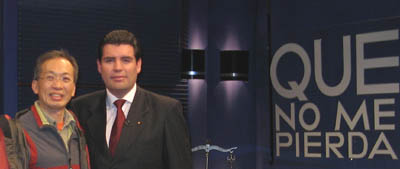
David Lim and John Arandia, host of one of the biggest latin american TV chat shows, Que No Me Pierda
and beamed across live. We were stopped twice today by passerbys because of the show. Kinda weird doing a late night talk show in Spanish and English!
Thats all for now!
David
Saturday-04/08/2007-8pm-Llica7
THE JOURNEY BEGINS
We started our journey at 7am. From La Paz it was a 10 hrs drive in a big pick-up with the locally made trolleys , and about 100 litres of water and 6 days worth of food and barang barang.
On the drive there, we could see ostriches, llama, alpacas, flamingoes and the ginger coloured vicunas which is a smaller version of the llamas. No road kill, so it will be a simple dinner tonight, ha ha… We were dropped off at the start of our trek on the edge of the salt desert, about 6km from Llica.
The salt lake is spectacular, very hard and crystalline with the occasional funny shapes from salt mounds resulted from the strong winds. It is cold and windy.Tent is up and Shani making dinner… It’s instant noodle, extra salty.
We will keep the bicycle blinkers on at night around our camp site in case of the occasional vehicle that drive thru the salar, to warn the drivers. Temperature drops as the sun goes down, a bit chilly.
The real test on the locally made trolleys will be tomorow. They’re abt 20% smaller so we have to stack our barang barang high up, like karung guni.
David
Sunday-8pm desert time-05/08/2007 S20.02 006-W 67.96 064
We had just finished dinner clocking up 25km. This was 8 hours of dragging the trolleys, tired. Karang guni trolley is fine but not the wheels. Wheels are not aligned & therefore, increasing drag/resistance. Already replaced 1 inner tube for 1 wheel on Shani’s trolley. There is a slow leak on one of my tyres… Definitely not as good as Hospimek’s trolleys. Otherwise, we are well & weather’s good.
The desert is quiet, we hear our breathing and the soft crunch of the tyres as we move over the salt surfaces. The colors in the bright daylight is brilliant. Strangely, if we have a tail wind, we move at abour 4km/hr, less if there is none. At the end of this journey, Shani and I will be pretty “well preserved” with all the salt around us.
We have 50km to the Isle of Fishes tomorow. Our initial plan was to pull for 25 -30km each day but now we think that we have to move a bit faster, and do 30km a day if we want to reach our destination as scheduled. It will be faster when we finish more of our water and food. We had rice, eggs and a luncheon meat dinner
David
Monday-8.30pm desert time-06/08/2007 S20.18 065-W67.71 807
It was a 30 km day today. Strong tailwind saw us, at times, running to keep up with the trolleys ‘ pushed’ by the wind. We are knackered. A challenging day. Shani has been in front of me all day. She has been setting the pace. There is a cost for her though, she is now snoring away. Something she hardly ever does during our expeditions. She is very tired. I can hardly feel my legs. We had just finished eating and stuff, hardly have the energy to look around. Just enough energy to wolf down food and water. There is a temptation to drink and drink but we have to ration the water supply. Not much room for mistakes.
Right now, the stillness of the desert night is broken only by our snores in this part of the Salar de Uyuni. David. zzzz
Tuesday-7/08/2007-8.23pm desert time-S20.25 819-W67.48 024
The sky was a melange of vibrant colors as the sun sets. We had dinner watching the slow change of colors that slowly fades to a deep dark blue. The desert is quiet. Nothing lives, nothing that we could see or hear. The silence can be quite loud.
Today we did about 30 km, dragging the trolleys. The journey was broken by a few trucks driving pass, the drivers looked and waved. I wonder what their thoughts were, seeing us plod in the desert. The trolleys seems to be holding up, though the cheap tyres are beginning to look rather worn. Keeping our fingers crossed that they will hold up until the end of the journey. We are feeling the weight of the trolleys and we missed our waylaid trolleys. It was a challenge, dragging the trolleys over the desert. According to Shani’s GPS, we have about another 96km to go. We are about the midway of the journey and we are probably sitting in the middle of the desert. We have been careful rationing our water and our supplies should last us thru the journey. For now, a bit of rest as we looked at the night skies… stars do look bright in the desert….
David
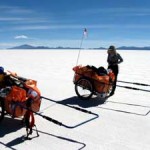 |
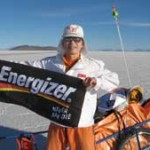 L to R: Our two ” La Paz Express” improvised desert carts on a rest-stop. R: A word from our Never Say Die sponsors – Energizer L to R: Our two ” La Paz Express” improvised desert carts on a rest-stop. R: A word from our Never Say Die sponsors – Energizer |
Wednesday-8/08/2007-7.24pm desert time-S20.29037 W67.25348
Above: A word from Singapore Sports Council and Singapore Pools, our partner in sports
Another 24km, and we have another 1.5 days more to go. We are about 2/3 across the desert. Last night, the temperature went down to about minus 12. A cool night. The trolleys are holding up somewhat. There are no bugs in the desert. The flat surface of the desert looks endless. Salar de Uyuni, is a sea of salt and the salt does get in our eyes. Staring out into the open white smooth surface of the desert and plodding away with the horizon almost changeless, gives a rather strange feeling. It’s like walking on a threadmill. You don’t feel that you’re moving.
Earlier, Bernardo sent a jeep over to check on us, It has gone on ahead over to Colchani. It will return to oick us up at the journey’s end. We are now resting and just moving around preparing for food. Put up the tent, eat and sleep.Right knee’s gone puffy but will survive. We are tired but by now I think we have developed a rthymn. Plod plod drag walk scratch plod plod….. key issue is can i complete the mission with a hurting knee…..David
Thursday-9/08/2007-6.33pm desert time-S20.31615 W67.03046
Happy Birthday Singapore!!!. Today’s Singapore’s National Day and Shani and me are celebrating with a big cuppa tea, a bit salty tea that is.It has been a long day for us. My knee got worse . Took some painkillers for my knees but I am limping quite a bit.. Shani helped me pull my trolley today. I took the water supplies. Shani’s beginning to look like “Thomas the Train” with two trolleys and me limping along. We reached our campsite just and we are now at the edge of the desert.
Tonight, the weather is getting a bit nippy, but we will managed. This will be our last night camping out. Tomorrow, we will have another 7 to 10 km before we reach Colchani. There, we will meet up with our transport who will drive us over to Uyuni, then back to La Paz.
David
Friday-10/08/2007-4.11pm-La Paz
A quick dispatch today. Owing to my knee strain injury, the expedition came within an inch of being given up after Day 4. However, through some great teamwork and the lashing together and pulling of both our trolleys by Shani on the last big day (day 5), we made the outskirts of Colchani. Left ankle has gone puffy too woing too the strain put on it from yesterday. Walking wounded. Today, we trekked the final 5 km to the end of the Salar, pass an active salt extraction mine, where, with perfect timing , our 4×4 met us within 10 minutes, and took us to Uyuni (the big town in this region) where we are resting right now, washing and have just enjoyed a thin crust pizza with freshly squeezed orange juice. Painkillers are next on the menu.
NIghts are still cold (down to -15 degrees), but we are elated in having made the crossing, the 4th ever, and in good style, not withatanding DHL´s cock-up with our trolleys. Totally ´off´GPS coordinates for the crucial Day 5, maybe the salt got into the device or something. We have pictures coming up over the weekend and hope to touch down in Singapore Aug 14, 2355hrs. Tomorrow, it’s a 11 hours drive back to La Paz for our 0700hrs departure on the 12th. See ya soon and tks for the support, David
Saturday-11/08/2007-8.30pm
Back in La Paz after a 10 hour drive back with Tomas and Sonia. Enjoying a huge mixed grill or ” parillada” in Espanol – lots of innards like tripe, blood sausage, chorizo, sweetbreads ( or grilled cow thyroid glands ) pork, beef and chicken chop – all on a plate that could feed three persons. A bottle of Bolivian red wine from La Concepcion, the world’s highest vineyard, Bernardo catching up with the news – a great way to wind up a record-setting expedition.Until next time….
Salar and Bolivia Fun Tips
Salar in the winter: We found we only needed about 5 – 6litres of water per day, and had to off load some water towards the end of the crossing – a slight risk, but acceptable. BTW, the salt pan is rock-hard and if you are camping, you’llneed to guy a tent with weights (like we did ) or bang in strong pegs with a mallet.
Going to the loo: We burned all the loo paper we used on the spot to prevent wads of the stuff blowing around the Salar for the next few years. It’s so dry there, that hardly anything decomposes or breaksdown.
Vicunas vs alpacas vs llamas: Vicunas are protected camelids and have a lovely yellow-brown coat and can live in very dry areas in pairs ( they mate for life ) or groups of about 10 – 14. The don’t breed in captivity, so any you see are ‘ wild’ . Alpacas need to be close to water/streams/lakes, have a bushier coat and are smaller then their close cousins, the llamas ( which are more popular as load carriers )
Weirdest creatures we saw: South American ostriches on the altiplano – whoaaa! We thought they only roamed around in Africa.
Coca: You can chew these dried coca leaves as an energy stimulant, or drink some coca tea ( very mild leafy taste ) . To get anything stronger from this useful leaf/plant is encourage the DEA or similar law enforcement officers to take more than a casual interest in you.
La Paz costs: In short, pretty reasonable. Meals/snacks can be anywhere up from 10 Bolivianos ( US$1 = 7.8Bs, SG$1 = 5Bs ), with inner city taxi rides in the 7Bs range
Fave hotel in La Paz: The Camino Real on Av. Kapitan Ravello – with 24/7 free internet access, and a great restaurant – La Tranquera, not to mention the good breakfast buffets
Souvenir-hunting in La Paz: try the old markets north of the Cathedral, especially the Calle Linares – full of alpaca product shops, T-shirts, bags, and knick-knacks
Souvenir-hunting in Uyuni: Basic – your best bet for salt crystals, cactus wood carvings etc is to get em at the makeshift stalls in Colchani – very popular with the jeep-supported touristas. Uyuni is better for a few decent hotels, and a couple of nice local restaurants like the Julio de 16 or the Restaurant Italia ( great thin crust pizzas )
Che Guevara: You see pictures of this guy everywhere. You might remember him as old Fidel Castro’s sidekick when they won the revolutionary war in Cuba in the 1950s. Alas, Che wanted to export his brand of communist revolution and headed down to Bolivia where he did not get the same amount of support and was eventually worn down, captured and shot by the powers that be.
Flights: A total pain as it’s a minimum 36 hours from Asia. Typical routings from Singapore are to Los Angeles – Miami-La Paz. In the other direction, you could go to Johannesburg-Buenos Aires -La Paz or London/Madrid – Lima – La Paz. Costs will be in the region of SG$3600 – 4200 cattle-class or about US$2500 – 2700
Visas: A breeze if you from the USA or Japan. For some strange reason, the Bolivians have classified Singaporeans alongside with nationals ffrom Afghanistan and Djibouti. Of the three categories, we’re in the bottom one – normally requiring a consular interview, a month of processing et al – and there are scant embassies in Asia. The ones in Tokyo and Beijing weren’t interested to help get us a tourist visa and the consular officer in Manila said you could get visa at the airport ( bull ). Eventually, our connections ponied up a diplomatic visa for us, sans consular interviews.
Our Main Sponsors:

Energizer lithium batteries were selected for their exception long life and ability to function at sub-zero temperatures. Energizer’s Never Say Die Club ( for Singapore residents ) offers
- Inspirational ‘Never Say Die’ stories
- Promotions •games/contest to win prizes
- Game(s) downloads
- Invitation to special events (dance. music, photography related, etc)
 The Singapore Sports Council is once again supporting and extreme and adventure sport initiative through their Sports Partnership Promotion Programme (SPPP). The Sports Partnership Promotion Programme (SPPP) is an initiative by the Singapore Sports Council aimed at generating more sporting opportunities through the support and assistance of partners’ and service providers’ events or programmes that are open for public participation. Partners to SSC are Singapore Pools and the Singapore Totalisator Board.
The Singapore Sports Council is once again supporting and extreme and adventure sport initiative through their Sports Partnership Promotion Programme (SPPP). The Sports Partnership Promotion Programme (SPPP) is an initiative by the Singapore Sports Council aimed at generating more sporting opportunities through the support and assistance of partners’ and service providers’ events or programmes that are open for public participation. Partners to SSC are Singapore Pools and the Singapore Totalisator Board.

David Lim: Singapore’s most prolific mountaineer, with over 55 alpine ascents and expeditions including leading the 1st Singapore Everest Expedition in 1998, and the second (from the north ridge, 2001) Singapore Everest expedition. Partially disabled from Guillain Barre Syndrome since 1998, he continues to inspire thousands through his seminars and presentations, and is one of Asia’s leading motivational coaches and speakers. Made the first all-Singapore ascent of Aconcagua, the highest peak in North and South America in Feb 2000, soloed Ojos del Salado ( 6893m ) in 2005, and many South East Asian mountaineering ‘ firsts’. To learn more, see his FAQ page from 2002.

Shani Tan: Dr Tan has a long climbing resume which includes Aconcagua, Elbrus and Mont Blanc. She made the first Singaporean women’s attempt to climb Mt McKinley in Alaska in 2002. She was the official basecamp doctor for the 1st Singapore Everest Expedition in 1998, and was part of the Maccoffee Tien Shan Virgin Peaks Expedition team in 2005 where she made two first ascents of virgin peaks on the Kyrgyzstan/ Kazakhstan border.
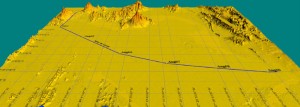
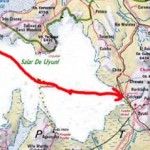
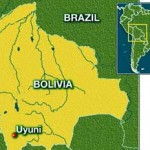
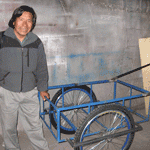
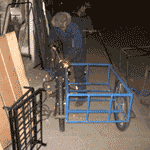
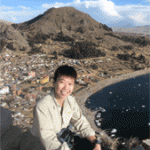
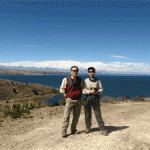
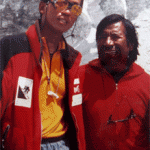
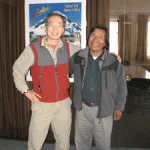
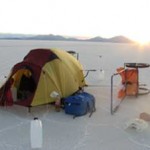
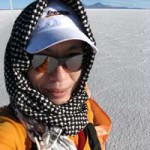
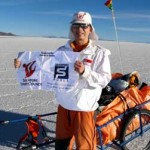
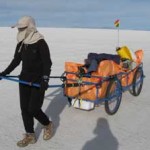
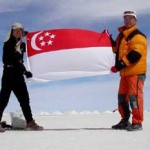
Leave a Reply